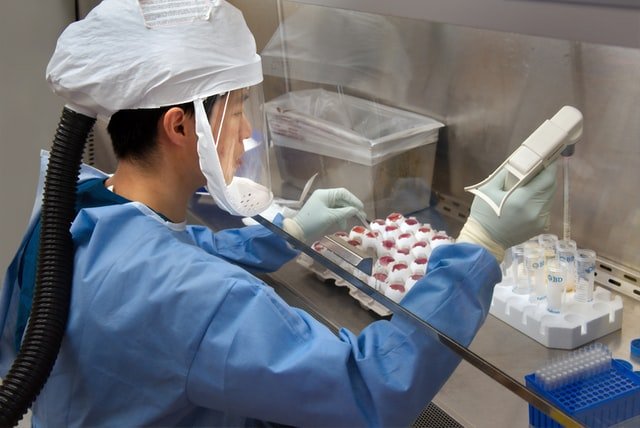Uterine Cancer
- Biotexus
- September 22, 2025
About the thyroid
Thyroid cancer begins in the thyroid gland. This gland is located in front of the neck, just below the larynx, called the larynx. The thyroid gland is part of the endocrine system that regulates hormones in the body. The thyroid gland absorbs iodine from the bloodstream to produce thyroid hormone, which regulates human metabolism.
The normal thyroid gland has two lobes, one on each side of the trachea, connected by thin pieces of tissue called the isthmus. A healthy thyroid is almost imperceptible. In other words, it is difficult to find by touch. Swelling or enlargement of the thyroid gland is called goiter and can occur when iodine is deficient. However, most Americans get enough iodine from salt, and goiter in these situations is caused by other reasons. When a tumor develops in the thyroid gland, it is recognized as a lump in the neck.
About uterine cancer
Uterine cancer is the most prevalent type of cancer that affects the female reproductive system. Uterine cancer develops when healthy cells in the uterus alter and expand uncontrollably, generating a mass known as a tumor. A tumor might be malignant or benign. A malignant tumor is one that can develop and spread to other regions of the body. A benign tumor can develop but will not spread to other regions of the body.
Uterine cancer is classified into two types:
Adenocarcinoma : This kind accounts for the vast majority of uterine malignancies. It is formed by cells in the endometrium. Endometrial cancer is the most prevalent name for this type of cancer. Endometrioid carcinoma is a frequent subtype of endometrial cancer.
Sarcoma: This form of uterine cancer occurs in the uterine glands’ supporting tissues or the myometrium, which is the uterine muscle. Sarcoma contributes for roughly 2% to 4% of all uterine malignancies.
Risk Factors
The following factors may raise the risk of developing uterine cancer:
Age. Uterine carcinoma is most common after the age of 50. The typical diagnostic age is 60. Uterine carcinoma is uncommon in persons under the age of 45.
Obesity. Overweight people’s fatty tissue generates more estrogen, a sex hormone that can raise the risk of uterine cancer. This risk rises with an increase in body mass index (BMI), which is the weight-to-height ratio of a person. Obesity is associated to around 70% of uterine cancer incidences.
Race. White women are more likely than other races/ethnicities to acquire uterine cancer. However, Black women are more likely to be diagnosed with advanced uterine cancer.
Genetics: Uterine cancer may be inherited in families when colon cancer is inherited.
Type 2 diabetes: If a person has type 2 diabetes, which is typically connected with obesity, they may be at a higher risk of developing uterine cancer.
Other types of cancer: People who have had breast cancer, colon cancer, or ovarian cancer are at a higher risk of developing uterine cancer.
Tamoxifen: People who use tamoxifen (Nolvadex) to lower their chance of acquiring breast cancer or a recurrence of breast cancer have an increased risk of developing uterine cancer.
Radiation therapy: People who have previously received radiation therapy for another cancer in the pelvic area (the lower portion of the abdomen between the hip bones) are at a higher risk of developing uterine cancer.
Symptoms
People with uterine cancer may experience the following symptoms or signs.
- Unusual vaginal bleeding, spotting, or discharge. For premenopausal people, this includes menorrhagia, which is an abnormally heavy or prolonged bleeding, and/or abnormal uterine bleeding (AUB).
Abnormal results from a Pap test
- Pain in the pelvic area
The most prevalent sign of endometrial cancer is abnormal vaginal bleeding, which can range from a watery, blood-streaked flow to a more bloody flow. Vaginal bleeding during or after menopause is frequently an indication of a problem.
Treatment
The common types of treatments used for uterine cancer are described below.
Surgery
During a surgery, the tumor and some surrounding healthy tissue, known as a margin, are removed. It is usually the initial treatment against uterine cancer.
The following are some of the most common uterine cancer surgery procedures:
Hysterectomy : Depending on the degree of the malignancy, the surgeon will perform either a simple hysterectomy (removal of the uterus and cervix) or a radical hysterectomy (removal of the uterus, cervix, the upper part of the vagina, and nearby tissues). For menopausal individuals, the surgeon would often conduct a bilateral salpingo-oophorectomy, which is the removal of both fallopian tubes and ovaries.
Removal of lymph nodes : The surgeon may remove lymph nodes surrounding the tumor during a hysterectomy to evaluate if the cancer has spread beyond the uterus. This can be accomplished by a sentinel lymph node biopsy or lymphadenectomy. A sentinel lymph node biopsy may entail injecting dye into the uterus during the hysterectomy and removing the few lymph nodes where the dye accumulates. In uterine cancer, this surgery has become more prevalent than lymphadenectomy. A lymphadenectomy, also known as lymph node dissection, is a surgical technique that removes a group of lymph nodes.
Radiation therapy
The use of high-energy x-rays or other particles to eliminate cancer cells is known as radiation therapy. Radiation treatment is often used following surgery to kill any leftover cancer cells. To reduce the tumor before surgery, radiation treatment is sometimes used. If surgery is not an option, the doctor may offer radiation therapy instead.
Radiation treatment directed at the whole pelvis and/or delivered solely to the vaginal canal, known as vaginal brachytherapy, are two options for treating uterine cancer. A variety of criteria influence which form of radiation is appropriate, however certain patients with low-risk illness may be able to have vaginal brachytherapy instead of pelvic radiation.
Therapies using medication
Medication used to eliminate cancer cells may be included in the treatment strategy. Medication can be delivered through the bloodstream to cancer cells all throughout the body. Systemic treatment refers to the administration of a medicine in this method.
The types of medications used for uterine cancer include:
- Chemotherapy
- Hormone therapy
- Targeted therapy
- Immunotherapy
Chemotherapy
Chemotherapy is the use of medications to eradicate cancer cells, often by preventing cancer cells from growing, dividing, and proliferating. Chemotherapy is generally used following surgery for endometrial cancer. If the endometrial cancer returns after the person’s initial treatment, chemotherapy is also recommended.
The purpose of chemotherapy is to somehow eradicate any cancer that remains after surgery or to reduce the disease and prevent its development if it returns or has spread to other places of the body. Although chemotherapy can be administered orally, the majority of medications used to treat uterine cancer are administered intravenously. IV chemotherapy is administered either directly into the vein or via a catheter, which is a thin tube put into the vein.
Hormone therapy
Hormone treatment is used to decrease the development of specific types of uterine cancer cells with hormone receptors. These cancers are often adenocarcinomas of grade 1 or 2.
Hormone treatment for uterine cancer frequently entails taking a high dosage of the sex hormone progesterone in tablet form. Hormone-expressing intrauterine devices (IUDs) and aromatase inhibitors (AIs) such as anastrozole (Arimidex), letrozole (Femara), and exemestane (Aromasin) are also often used in the treatment of breast cancer. An AI is a medication that decreases the quantity of estrogen in the body by preventing tissues and organs other than the ovaries from making it.
Targeted therapy
Targeted therapy is a type of cancer treatment that targets specific genes, proteins, or the tissue environment that contributes to cancer development and survival. This sort of therapy inhibits cancer cell development and spread while protecting healthy cells.
Uterine cancer targeted therapy is accessible in clinical trials and, in some cases, as part of standard-of-care treatment strategies. Uterine cancer targeted treatment includes:
Angiogenesis inhibition treatment : Anti-angiogenesis treatment aims to halt angiogenesis, or the process of forming new blood vessels.
Mammalian target of rapamycin (mTOR) inhibitors : Mutations in the mTOR pathway are frequently detected in endometrial cancer. A medication that disrupts this route may be used to treat people with advanced or recurring uterine cancer.
Targeted therapy to treat a rare type of uterine cancer : Uterine serous carcinoma is an uncommon but deadly kind of endometrial cancer.
Immunotherapy
Immunotherapy boosts your immune system’s ability to target cancer cells, allowing it to fight cancer naturally. Immunotherapy is more effective in uterine tumors with mismatch repair abnormalities.
Prevention
Different forms of cancer are caused by different circumstances. Researchers are still looking into what causes uterine cancer and how to avoid it. Although there is no established technique to avoid uterine cancer entirely, you may be able to reduce your risk.
Certain variables, according to research, can reduce the incidence of uterine cancer:
- Taking birth control pills. Birth control pills contain estrogen and progesterone, which are taken in cycles to generate a monthly menstrual period. This minimizes the chance of uterine lining overgrowth, especially when used over a lengthy period of time.
- Using a progestin-secreting intrauterine device (IUD), a type of birth control device.
- Considering the risk of uterine cancer before starting HRT, only estrogen replacement therapy in particular leads to an increased risk. The use of a combination of estrogen and progesterone for hormone replacement therapy can help reduce However, complex HRT is associated with breast cancer risk.
- Maintaining a healthy weight, ideally with a BMI of less than 25.
- If you have diabetes, you can reduce your risk by carefully managing your illness, such as frequently monitoring your blood glucose levels.



















